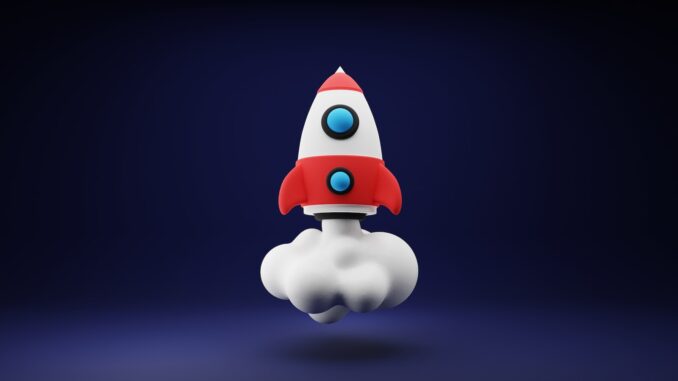
Launching and marketing a new product is an exhilarating journey that requires careful planning and consideration, especially regarding the associated costs. This comprehensive guide will delve into the various aspects that influence the expenses involved in launching and marketing a new product. Through expanded examples and estimates, we will give you a deeper understanding of the financial considerations for your product’s success.
1. Market Research and Validation
Market research is crucial to ensure that your product aligns with customer needs and preferences. The cost of market research varies depending on the scope, methods, and target market. Here are some potential expenses to consider:
– Online Surveys: Conducting online surveys to gather customer insights can cost around $1,000 to $5,000, depending on the sample size and survey complexity.
– Focus Groups: Organizing focus groups to gain in-depth feedback may range from $5,000 to $15,000, including participant incentives and facilitator fees.
– Competitive Analysis: Studying competitors and market trends can involve expenses of $3,000 to $10,000, depending on the level of analysis and depth required.
Example: A food startup seeking to launch a new vegan protein bar may allocate a budget of $10,000 for market research, including online surveys, focus groups, and competitive analysis.
2. Product Development
Developing a high-quality product involves various costs, including research and development (R&D), prototyping, manufacturing, and quality control. Consider these potential expenses:
– Research and Development: R&D costs can range from a few thousand dollars to millions, depending on the complexity of the product. Software development may require an investment of $10,000 to $100,000, while hardware development could reach several hundred thousand dollars.
– Prototyping and Testing: Depending on the product’s complexity and materials, creating prototypes and conducting testing may cost between $5,000 and $50,000.
– Manufacturing: Costs associated with manufacturing can vary significantly based on the product type, quantity, and manufacturing process. For instance, producing 1,000 units of a consumer electronics device might cost $50,000 to $100,000.
Example: A tech company developing a new smartphone might allocate a budget of $500,000 for research and development, prototyping, and manufacturing.
3. Branding and Packaging
Establishing a strong brand identity is crucial for product success. Consider these potential expenses:
– Logo and Visual Identity: Hiring a professional designer to create a logo and visual identity elements may cost between $5,000 and $20,000.
– Website Development: Developing a website that showcases your product and brand can range from $5,000 to $30,000, depending on its complexity.
– Packaging Design: Designing appealing and informative packaging might involve expenses of $5,000 to $15,000, depending on the complexity and materials used.
Example: A skincare company launching a new line of organic products might allocate a budget of $30,000 for logo design, website development, and packaging design.
4. Marketing Collateral and Content Creation
To effectively promote your product, you’ll need marketing collateral and engaging content. Consider these potential expenses:
– Photography and Videography: Hiring professionals for product photoshoots and video production might cost between $5,000 and $20,000.
– Copywriting: Developing compelling product descriptions, blog posts, and marketing materials may range from $2,000 to $10,000, depending on the volume and complexity of the content.
– Graphic Design: Creating marketing collateral such as brochures, flyers, and banners might involve expenses of $2,000 to $10,000, depending on the number of deliverables.
Example: A fashion brand launching a new collection may allocate a budget of $15,000 for photography, copywriting, and graphic design of marketing collateral.
5. Advertising and Promotion
Marketing your product through various channels requires budget allocation for advertising and promotional activities. Consider these potential expenses:
– Social Media Advertising: Running targeted social media ads for a month may cost between $5,000 and $15,000, depending on the platforms and audience reach.
– Influencer Marketing: Collaborating with influencers to promote your product might involve expenses ranging from $2,000 to $50,000 per campaign, depending on their reach and engagement.
– Public Relations: Engaging a public relations agency to handle media relations and press releases could range from $5,000 to $20,000 per month.
Example: A fitness equipment startup may allocate a budget of $50,000 for a three-month advertising campaign, including social media ads, influencer collaborations, and public relations efforts.
6. Distribution and Sales
Getting your product to the market involves distribution and sales-related costs. Consider these potential expenses:
– Packaging and Shipping: Costs associated with packaging materials and shipping can vary based on the product size, weight, and shipping destinations. For example, shipping 1,000 units internationally might cost $5,000 to $15,000.
– Retail Partnerships: Establishing relationships with retail partners might involve costs such as slotting fees or cooperative advertising, ranging from a few thousand dollars to tens of thousands.
– Sales Team: Expenses related to hiring and training a sales team, including salaries and commissions, can vary depending on the team size and structure.
Example: A consumer goods company aiming to distribute their new kitchen gadget through retail channels might allocate a budget of $100,000 for packaging, shipping, and retail partnerships.
Launching and marketing a new product requires careful financial planning. By considering the expanded examples and estimates provided in this comprehensive guide, you can gain a clearer understanding of the various expenses involved in bringing your product to market. Remember that these estimates serve as general guidelines, and the actual costs will depend on your specific industry, product, and chosen strategies. Plan diligently, allocate resources wisely, and adapt your budget as necessary to maximize the potential success of your new product.
Chintan is the Founder and Editor of Loyalty & Customers.




